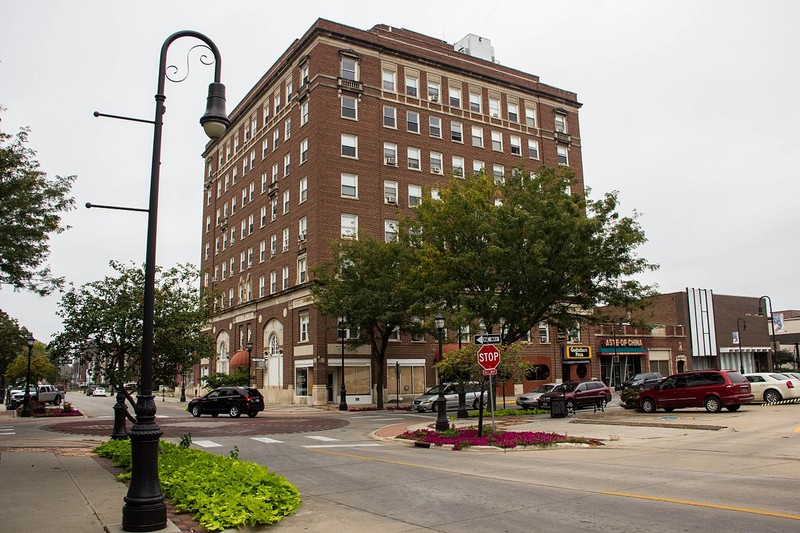Chieftain Hotel
Introduction
Text-to-speech Audio
Now a residence for senior citizens and people with disabilities, the former Chieftain Hotel was built in 1927 and remains an important landmark in Council Bluffs. It represents the city's prosperity in the 1920s and the boosterism that supported local economic development in the early 19th century. The building is also significant for its design, which combines Classical Revival and Italianate architecture. Interesting elements include pilasters topped with capitals, and two large arched openings with Palladian windows and cast concrete panels featuring decorative urns, garlands, medallions, and torches. The building was added to the National Register of Historic Places in 2014.
Images
The former Chieftain Hotel was built in 1927. It is now an apartment building for senior citizens and people with disabilities.

Backstory and Context
Text-to-speech Audio
A number of hotels in Council Bluffs preceded the Chieftain Hotel. One of the first was built in the 1870s by the Union Pacific Railroad, which had recently completed the eastern segment first Transcontinental Railroad. In the coming years, additional hotels were constructed. Some were two to three-stories tall and included dining rooms and other amenities. A new hotel called the Grand Hotel was built in 1891 to replace these hotels, which had become outdated. The Grand Hotel was designed be a showpiece. Six-stories tall, it boasted a glass-roofed hotel lobby, telegraph office, barber shop, cigar stand, dining room, and laundry room.
Unfortunately, the Grand Hotel was destroyed by fire in 1926 but local boosters and the community were determined to build a new one. Not only was it a matter of civic pride, they wanted to compete with Omaha, which had grown larger than Council Bluffs by this time (Omaha also had built new hotels). When it was completed in 1927, the Chieftain featured a large ballroom, convention room, and five private dining rooms. By including these facilities, the hotel not only provided lodging to travelers, it also became a public gathering place. As a result, the hotel both fostered civic pride and promoted economic development.
The Chieftain operated for several decades until it was converted into a residence for senior citizens and people with disabilities in the 1970s. It appears the building was rehabilitated again in the mid-2010s.
Sources
Page, William C. "Chieftain Hotel." National Park Service - National Register of Historic Places Nomination Form. June 6, 2014. https://npgallery.nps.gov/GetAsset/9086cccd-4387-4a89-b9aa-bab586ae5802.
Wikimedia Commons: https://commons.wikimedia.org/wiki/File:Hotel_Chieftain.jpg
